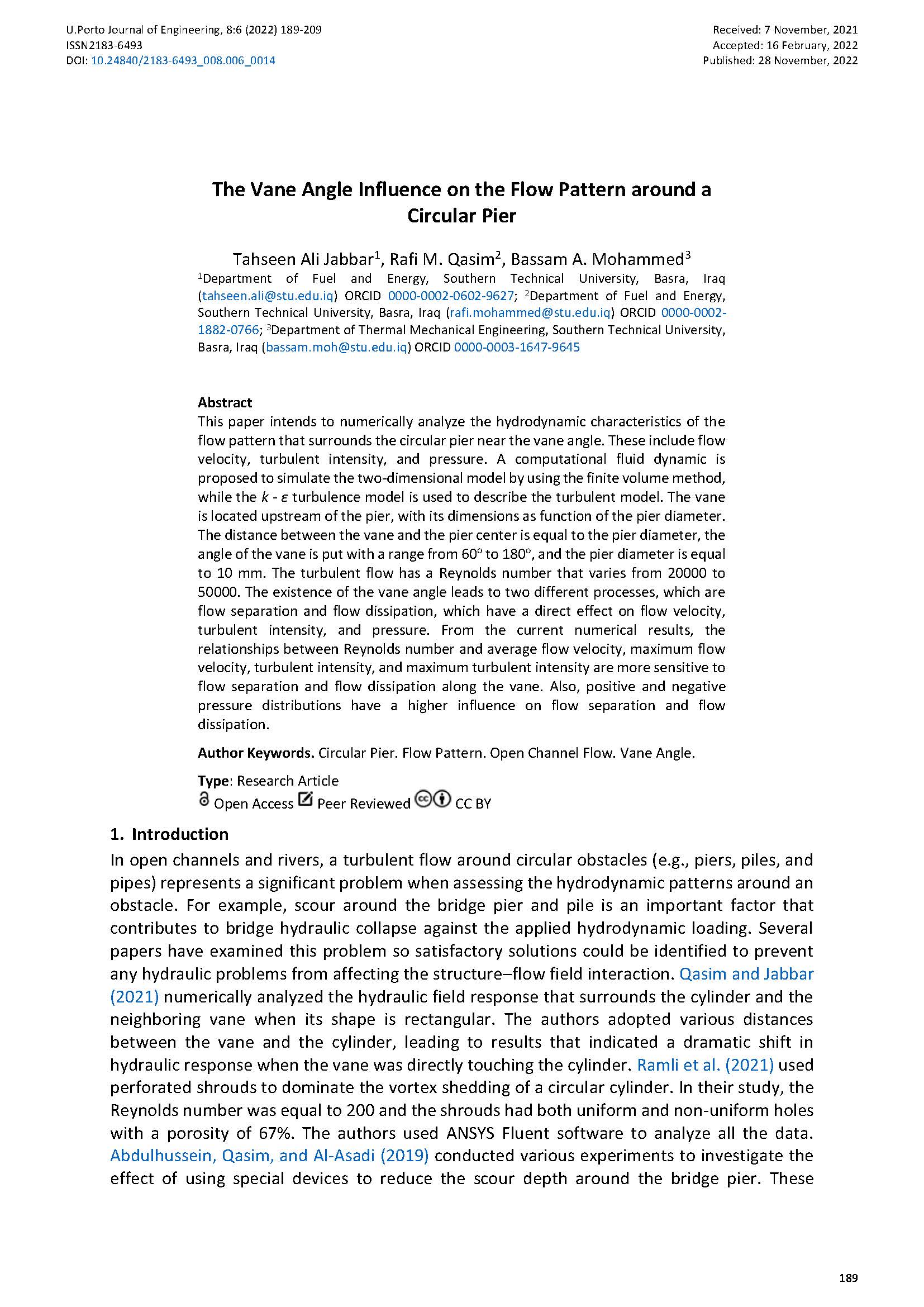The Vane Angle Influence on the Flow Pattern around a Circular Pier
Main Article Content
Abstract
This paper intends to numerically analyze the hydrodynamic characteristics of the flow pattern that surrounds the circular pier near the vane angle. These include flow velocity, turbulent intensity, and pressure. A computational fluid dynamic is proposed to simulate the two-dimensional model by using the finite volume method, while the k - ε turbulence model is used to describe the turbulent model. The vane is located upstream of the pier, with its dimensions as function of the pier diameter. The distance between the vane and the pier center is equal to the pier diameter, the angle of the vane is put with a range from 60o to 180o, and the pier diameter is equal to 10 mm. The turbulent flow has a Reynolds number that varies from 20000 to 50000. The existence of the vane angle leads to two different processes, which are flow separation and flow dissipation, which have a direct effect on flow velocity, turbulent intensity, and pressure. From the current numerical results, the relationships between Reynolds number and average flow velocity, maximum flow velocity, turbulent intensity, and maximum turbulent intensity are more sensitive to flow separation and flow dissipation along the vane. Also, positive and negative pressure distributions have a higher influence on flow separation and flow dissipation.
Downloads
Article Details

This work is licensed under a Creative Commons Attribution 4.0 International License.
Authors who publish with this journal agree to the following terms:
- Authors retain copyright and grant the journal right of first publication with the work simultaneously licensed under a Creative Commons Attribution License that allows others to share the work with an acknowledgement of the work's authorship and initial publication in this journal.
- Authors grant the journal the rights to provide the article in all forms and media so the article can be used on the latest technology even after publication and ensure its long-term preservation.
- Authors are able to enter into separate, additional contractual arrangements for the non-exclusive distribution of the journal's published version of the work (e.g., post it to an institutional repository or publish it in a book), with an acknowledgement of its initial publication in this journal.
- Authors are permitted and encouraged to post their work online (e.g., in institutional repositories or on their website) prior to and during the submission process, as it can lead to productive exchanges, as well as earlier and greater citation of published work (See The Effect of Open Access).

